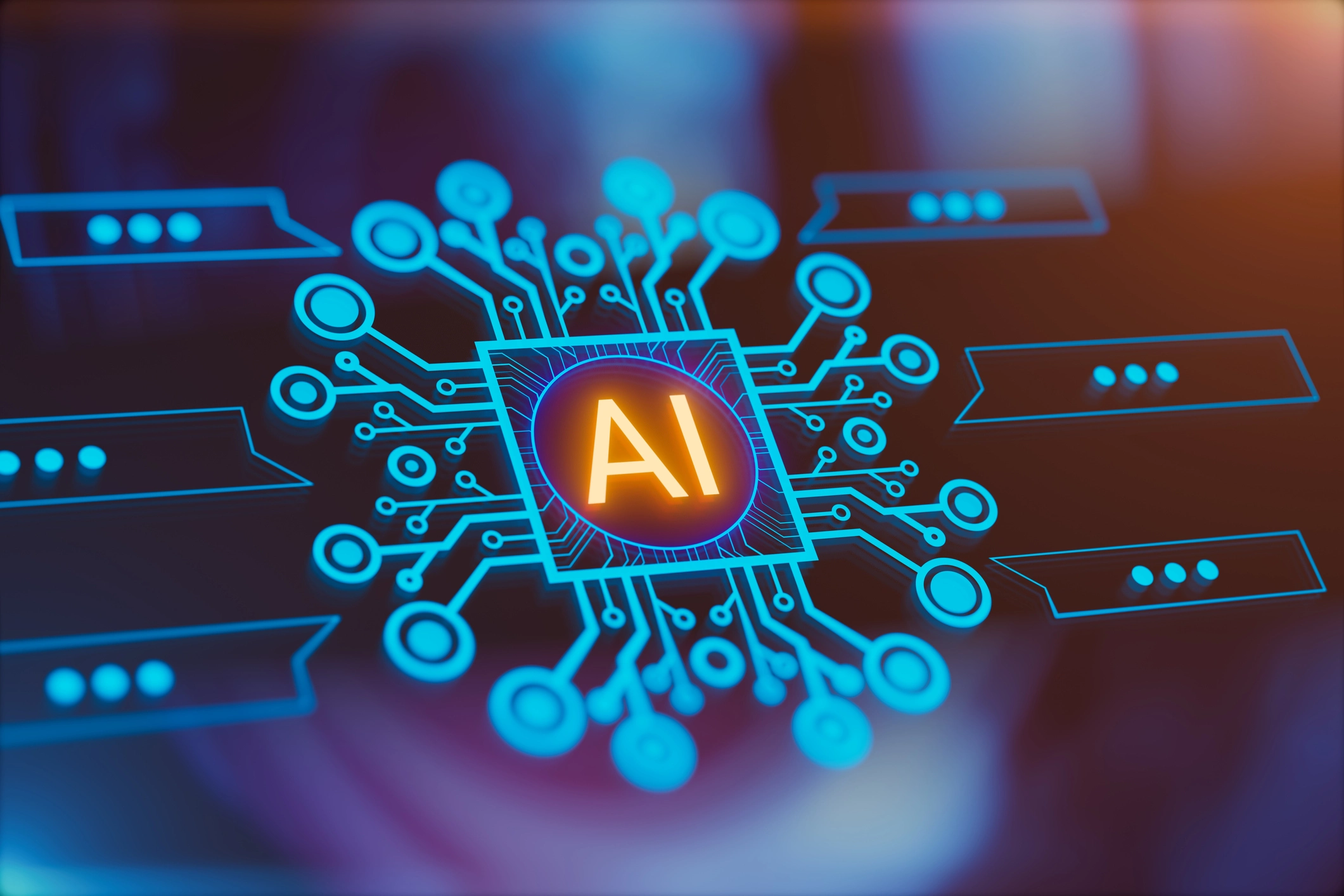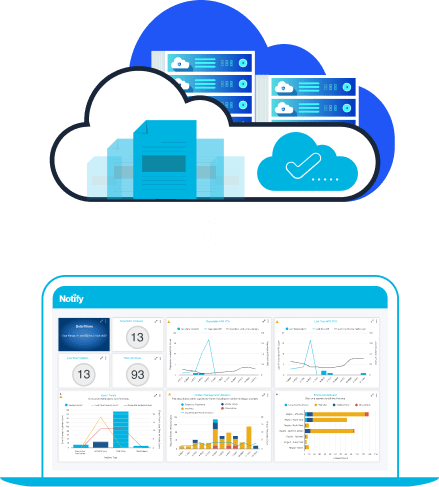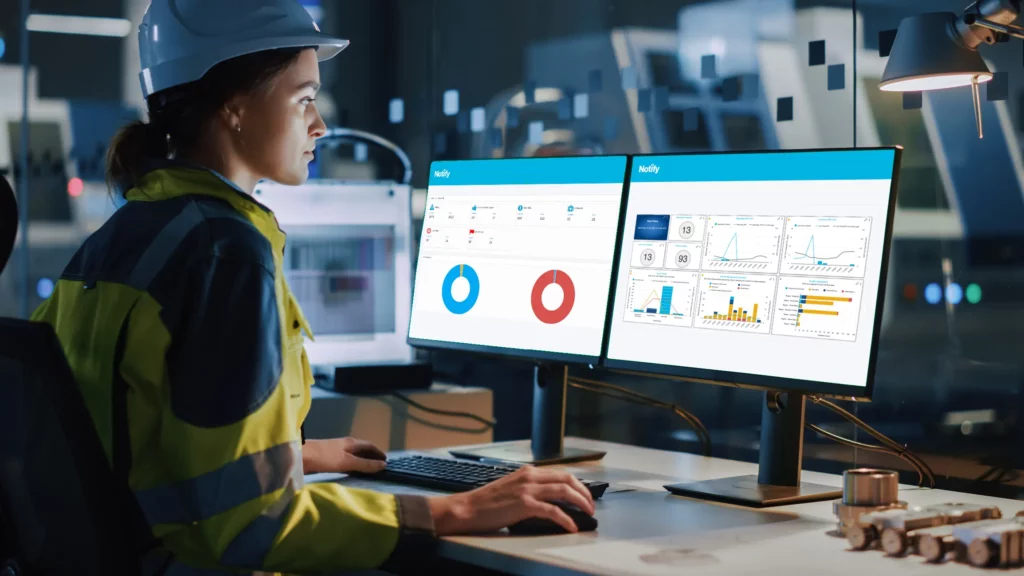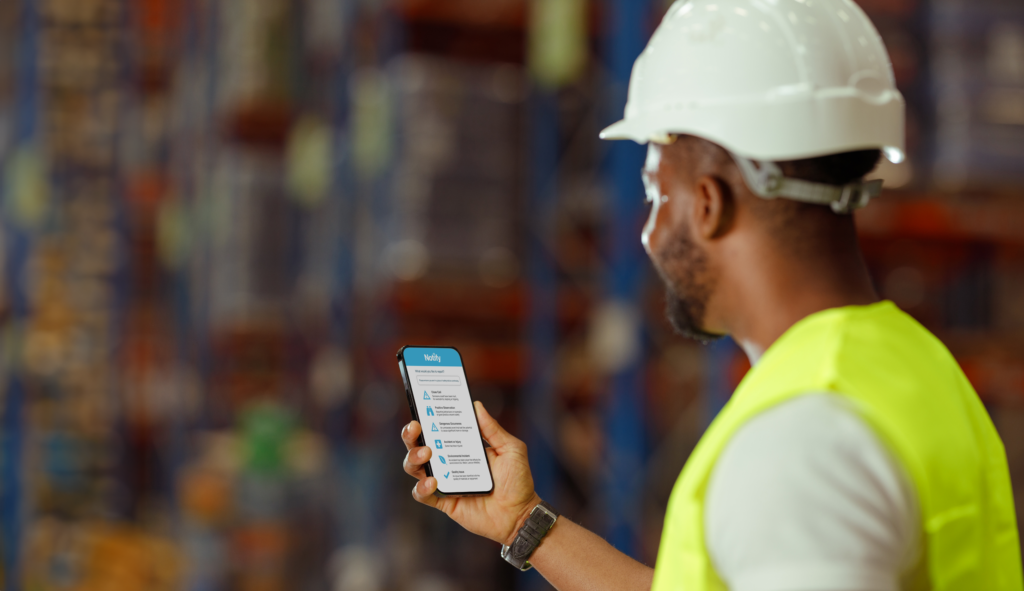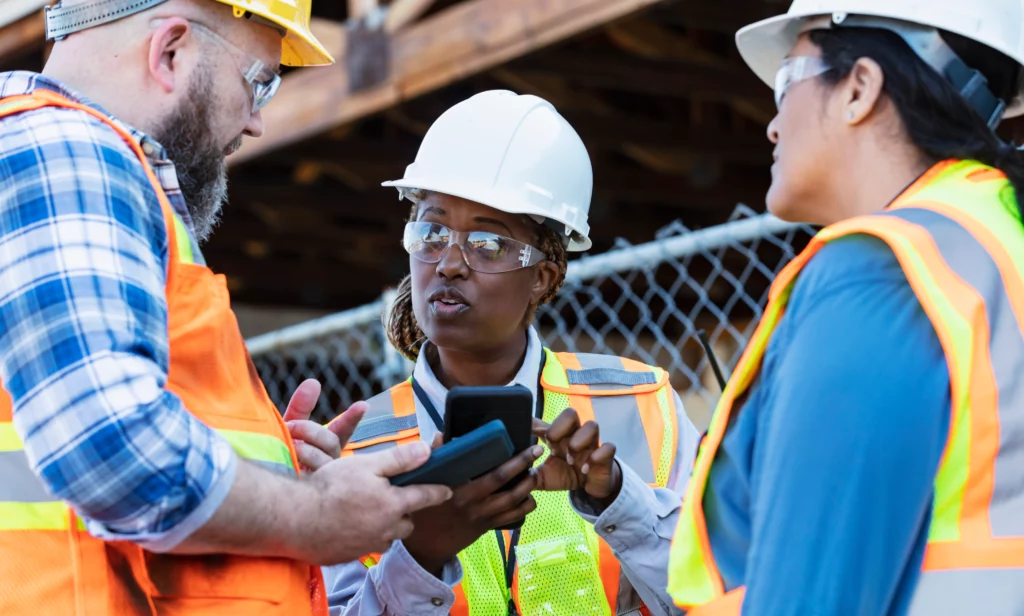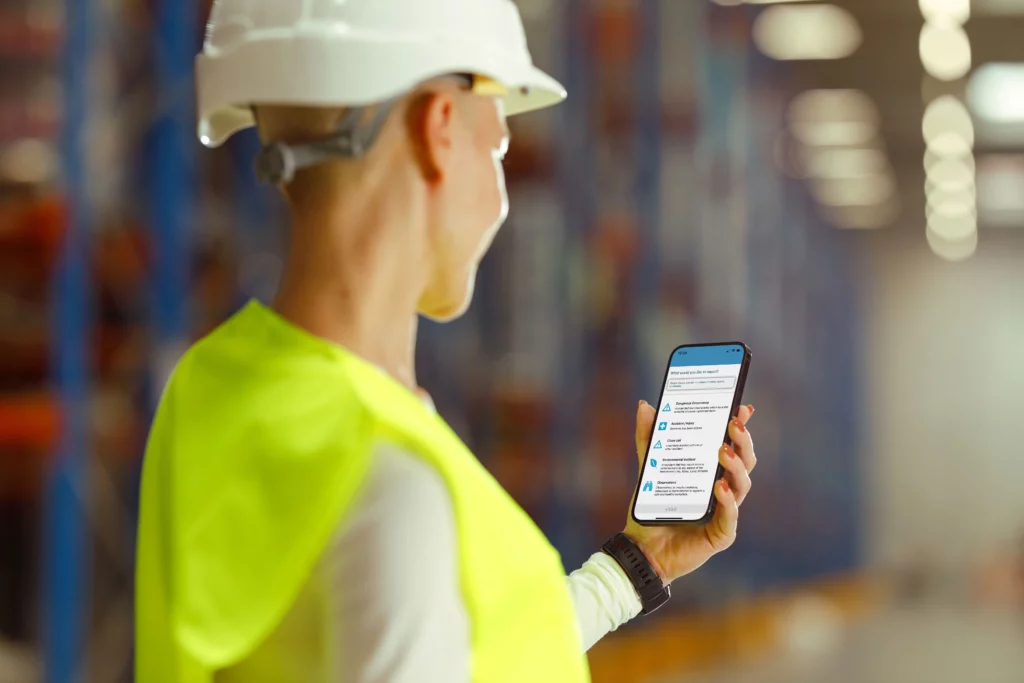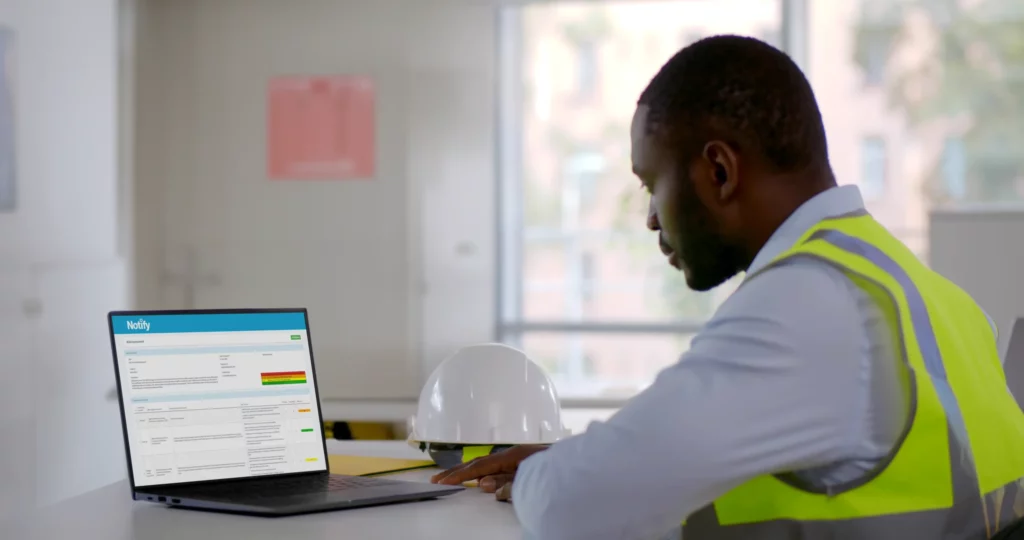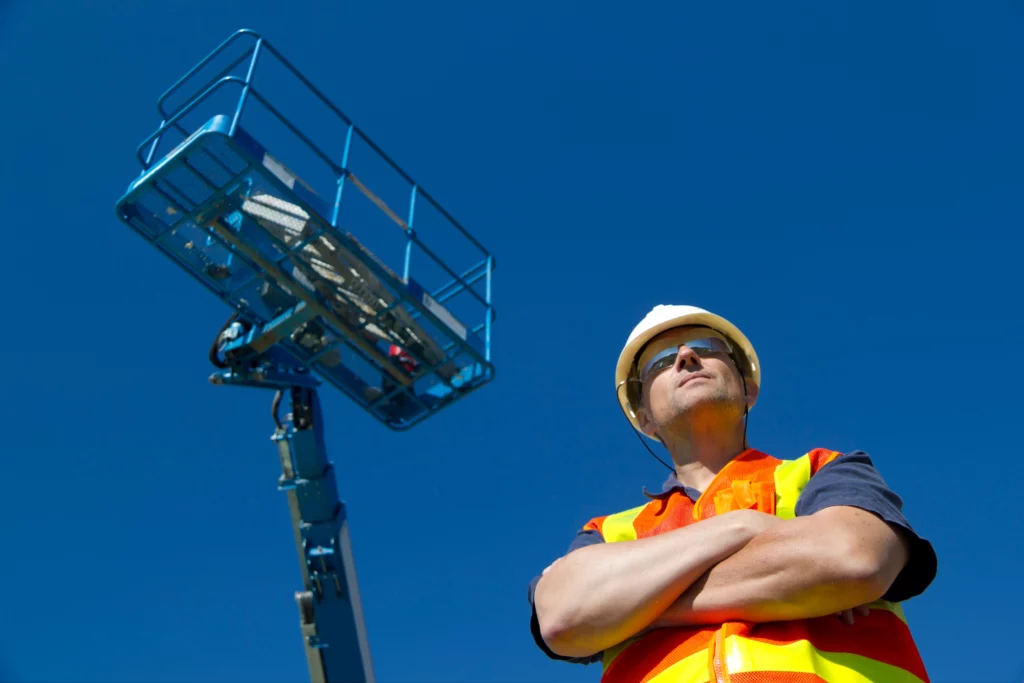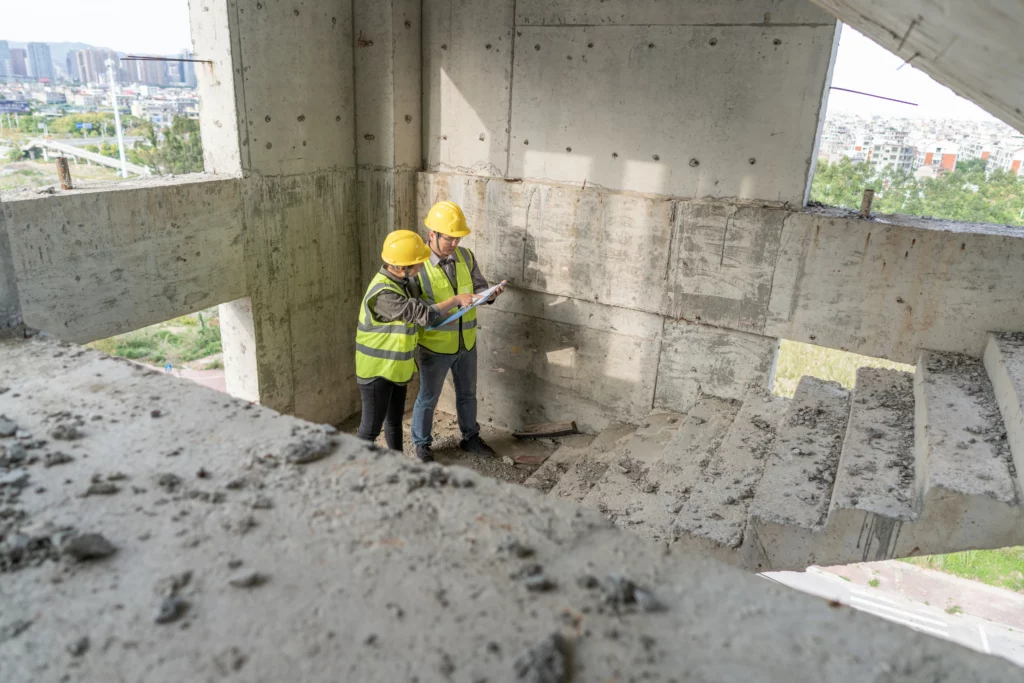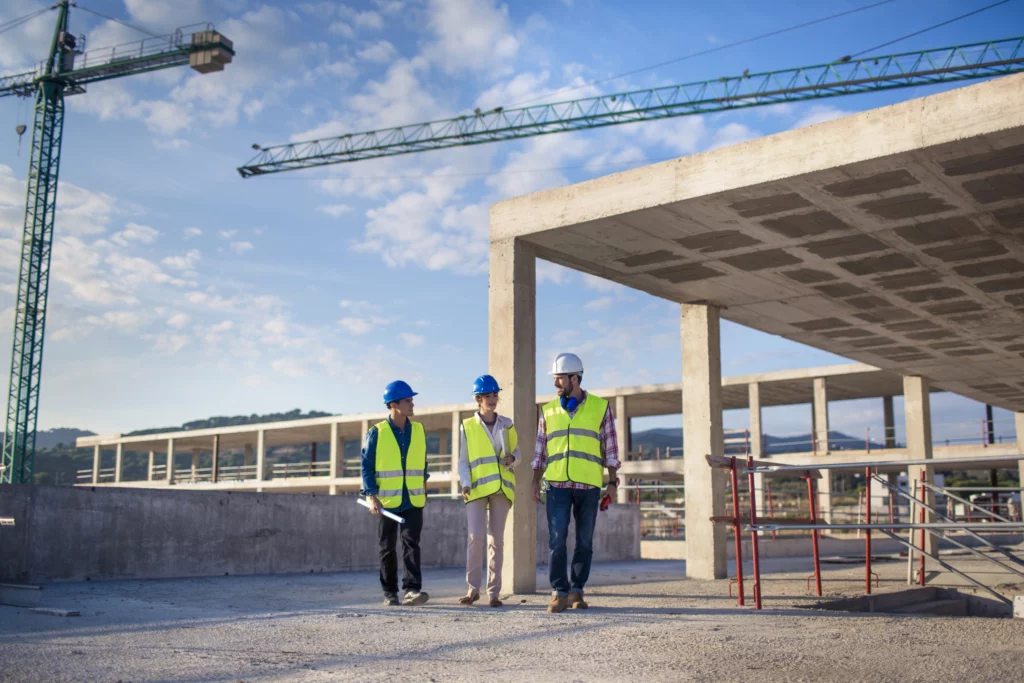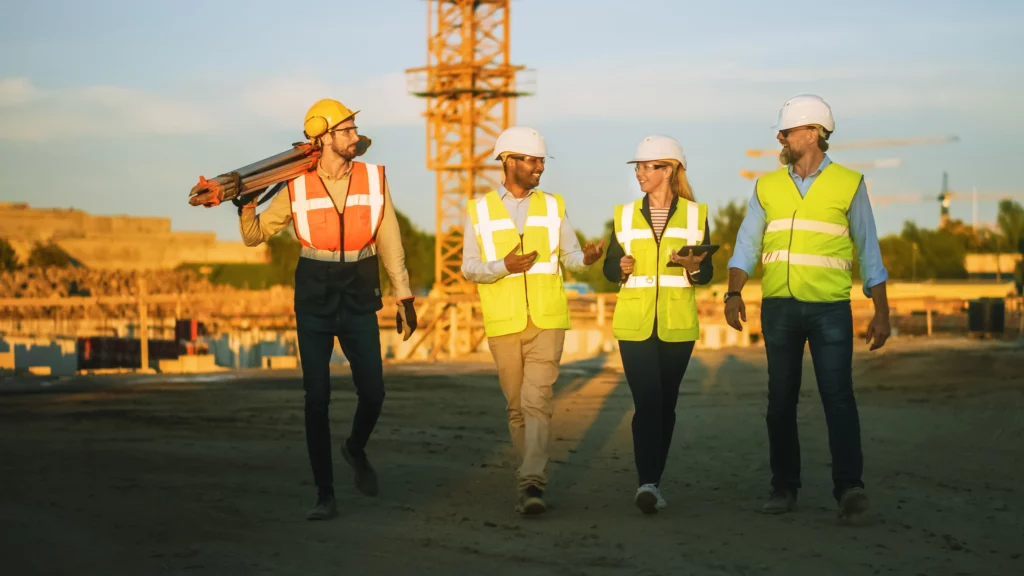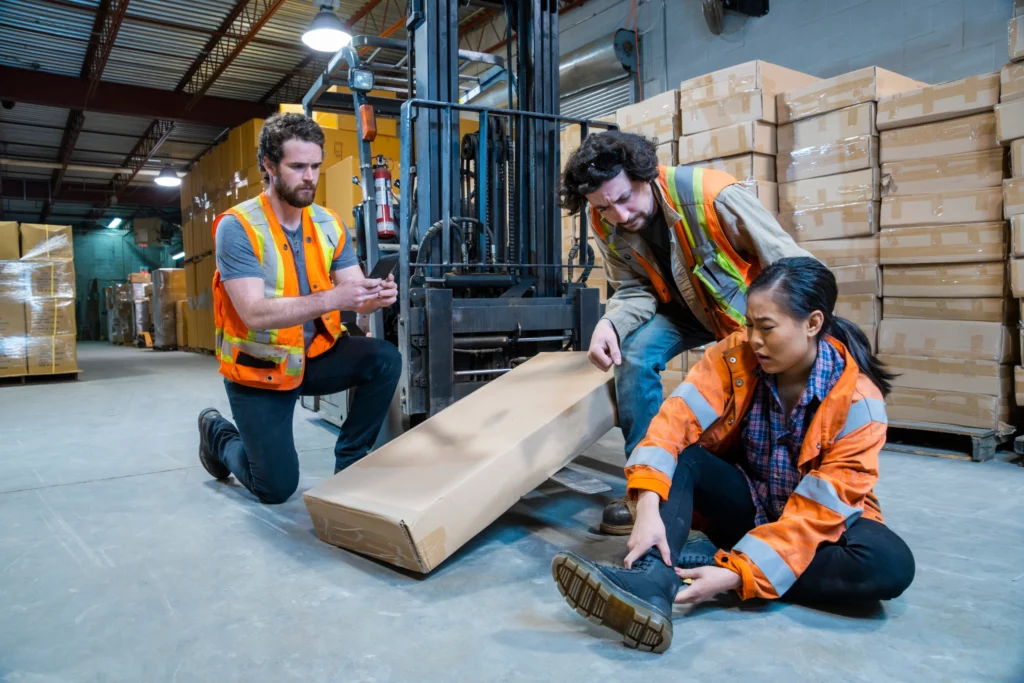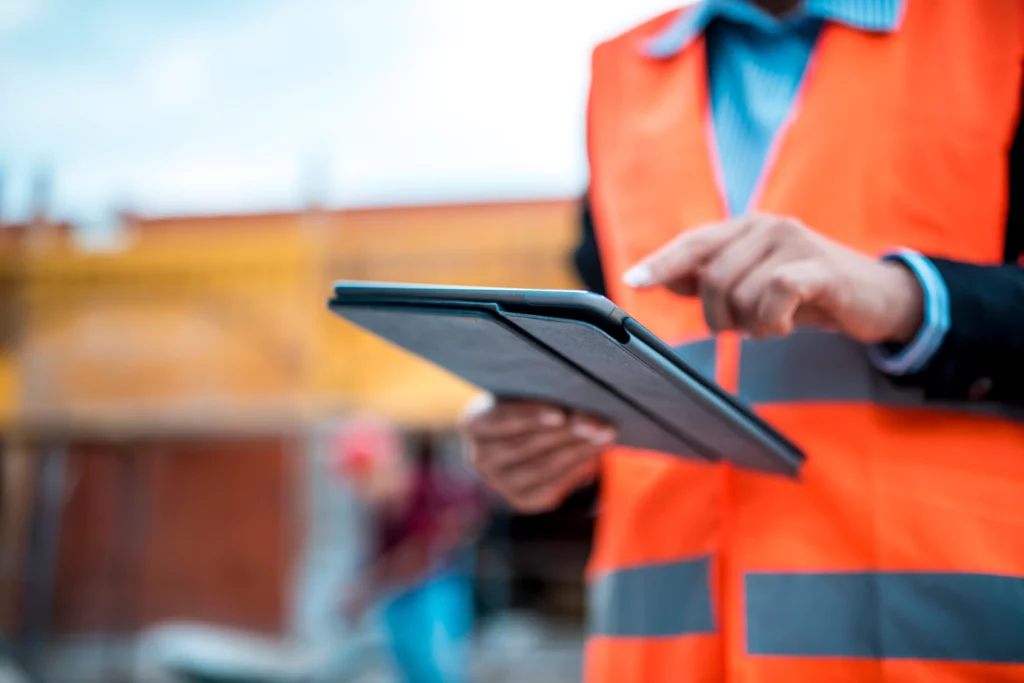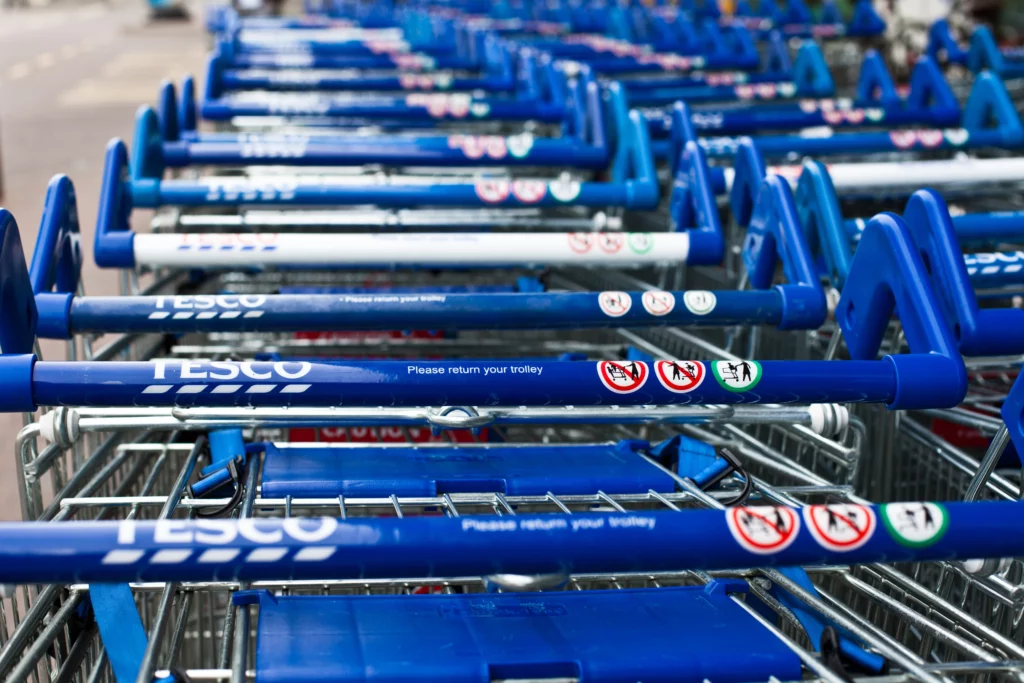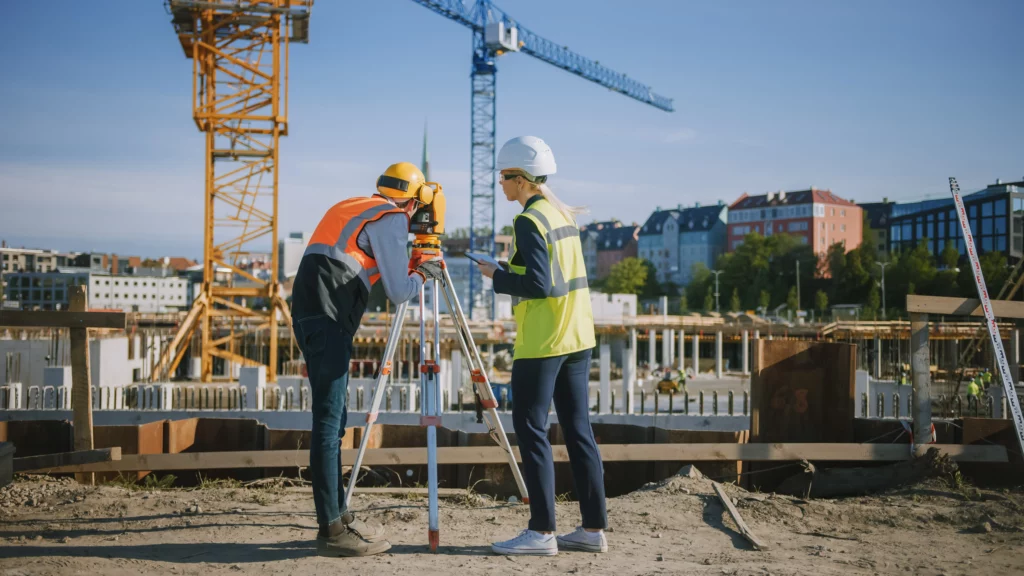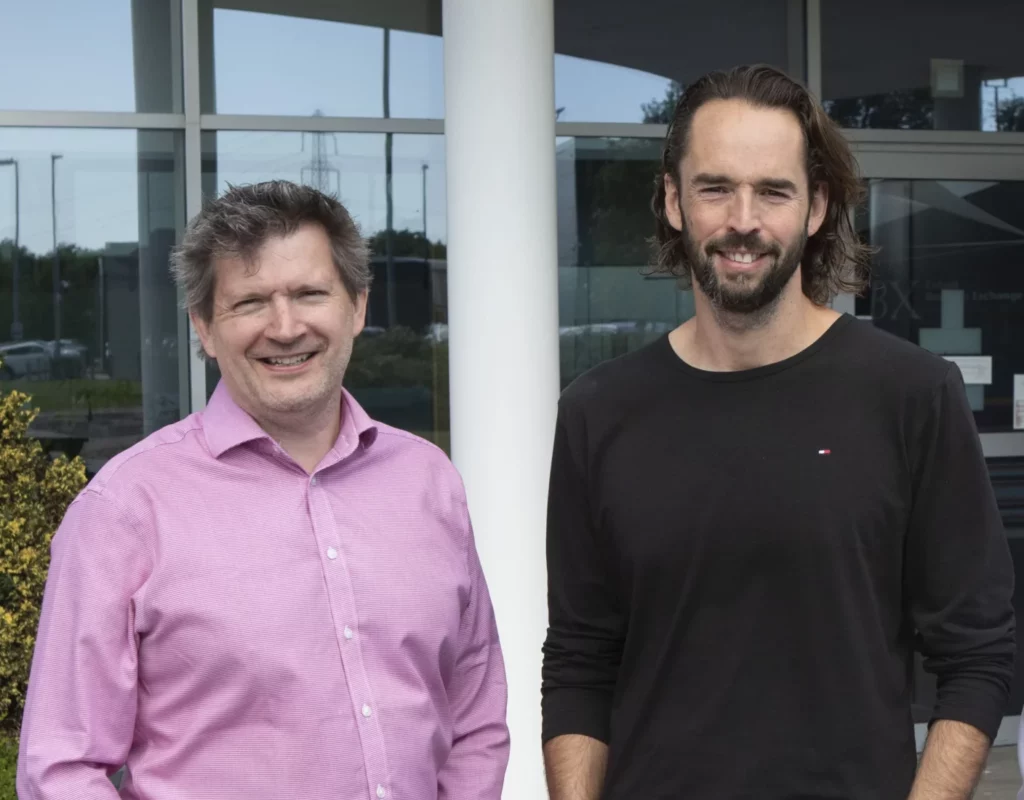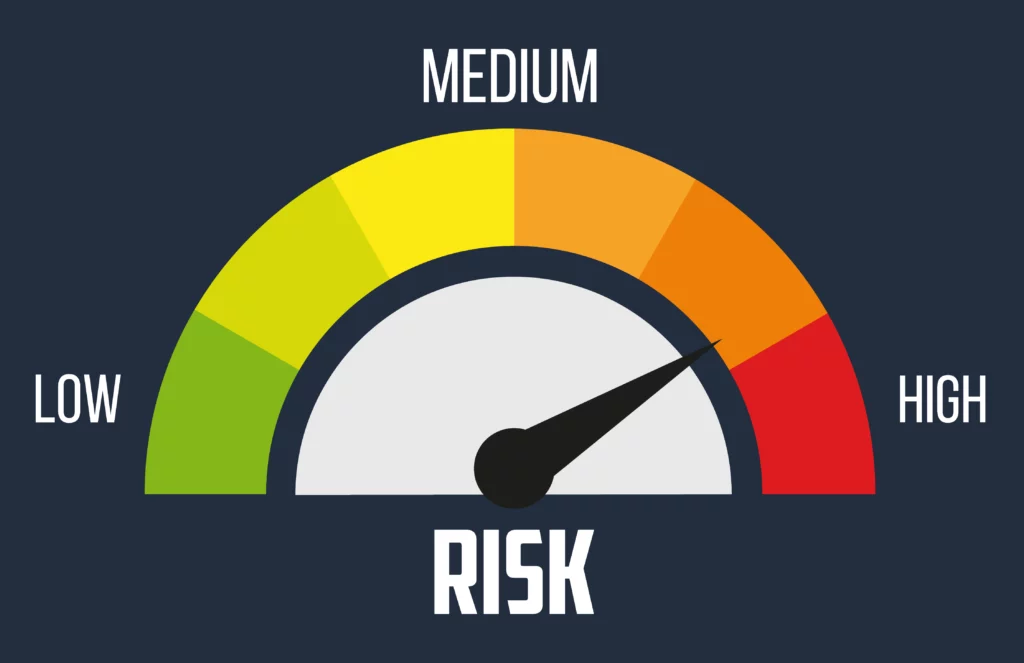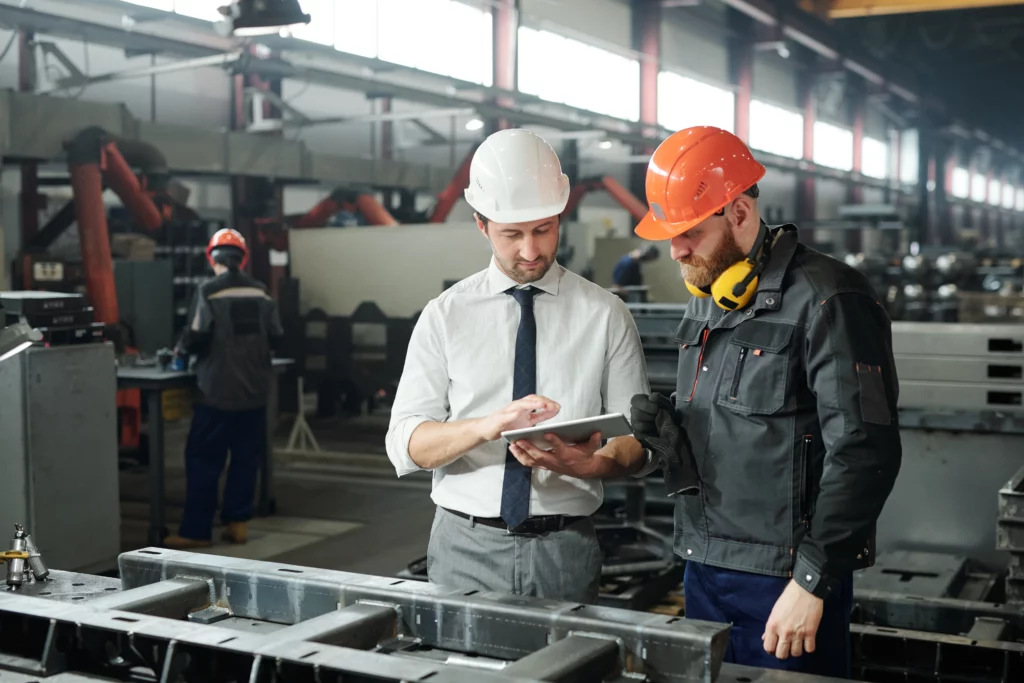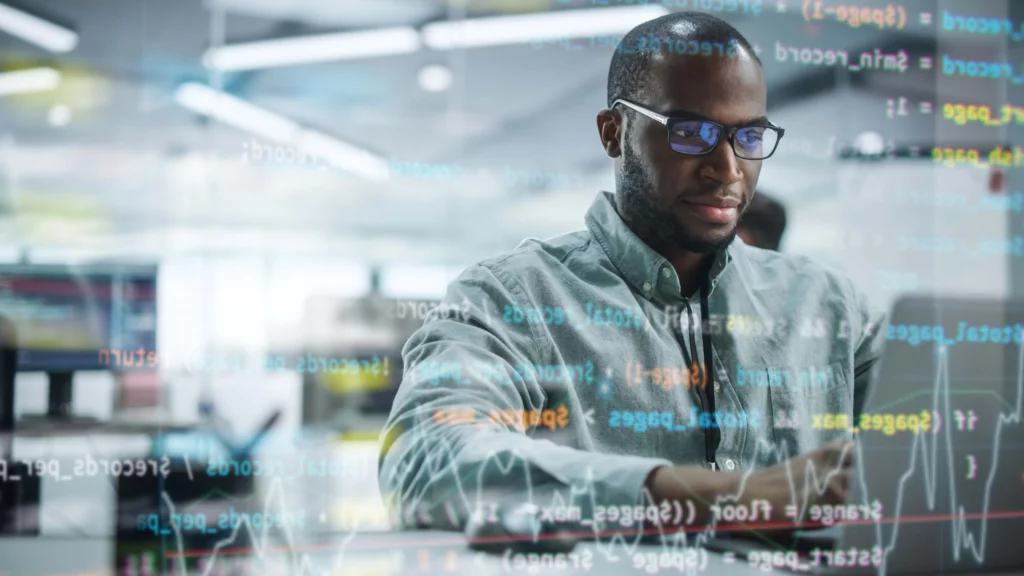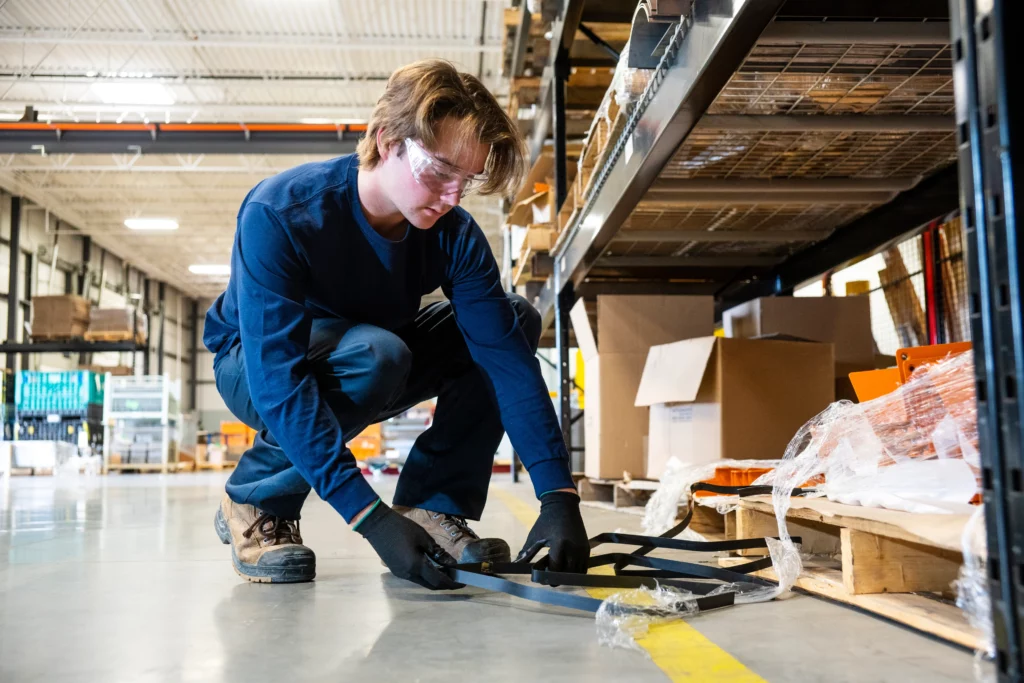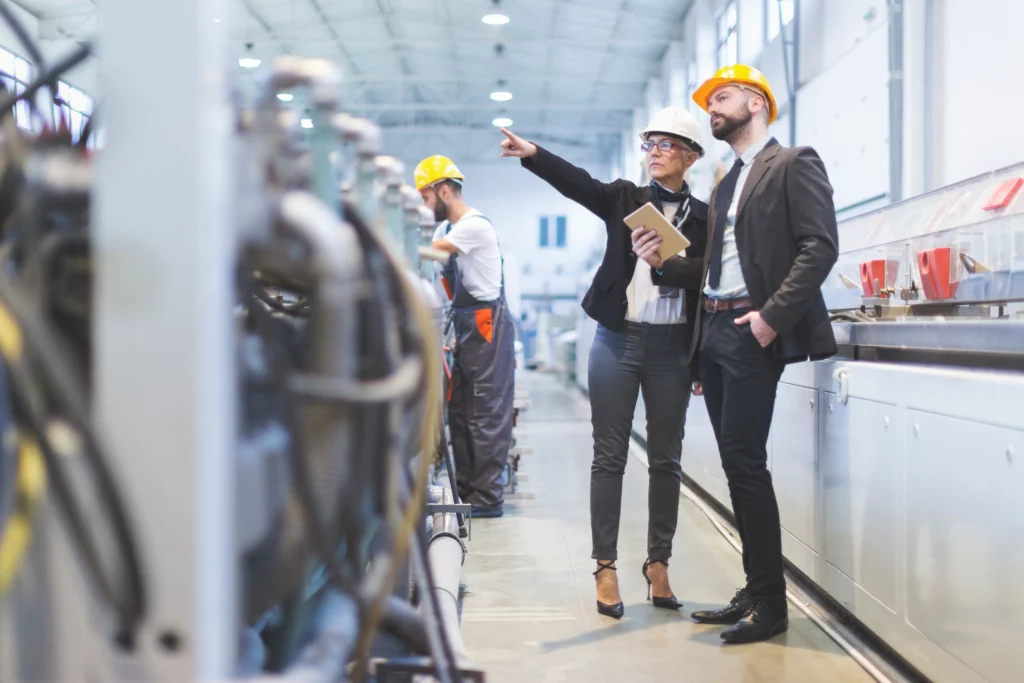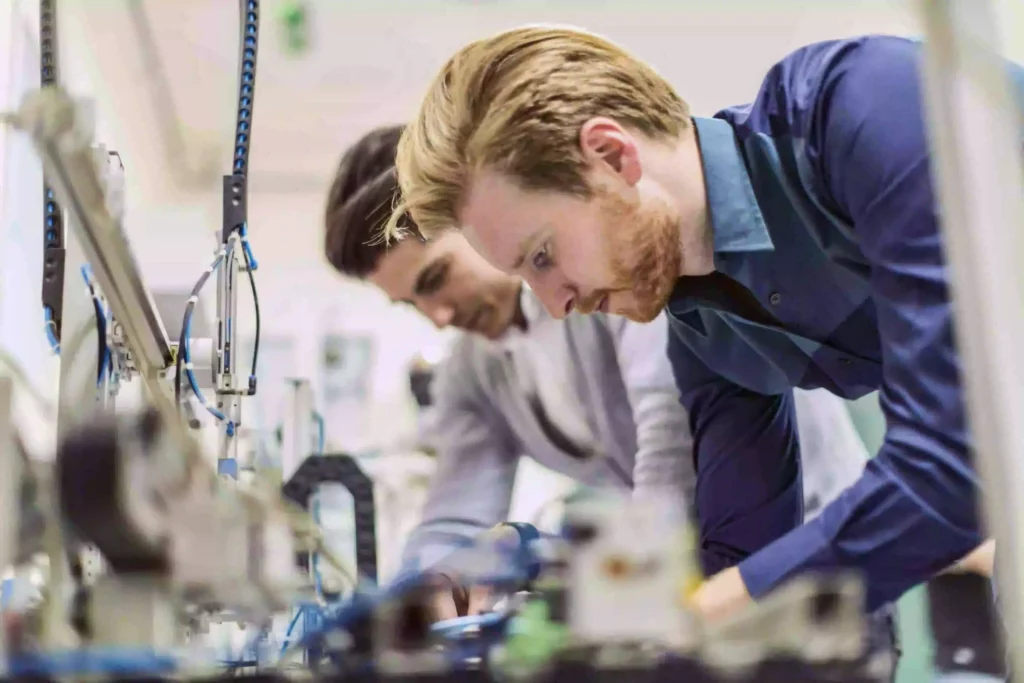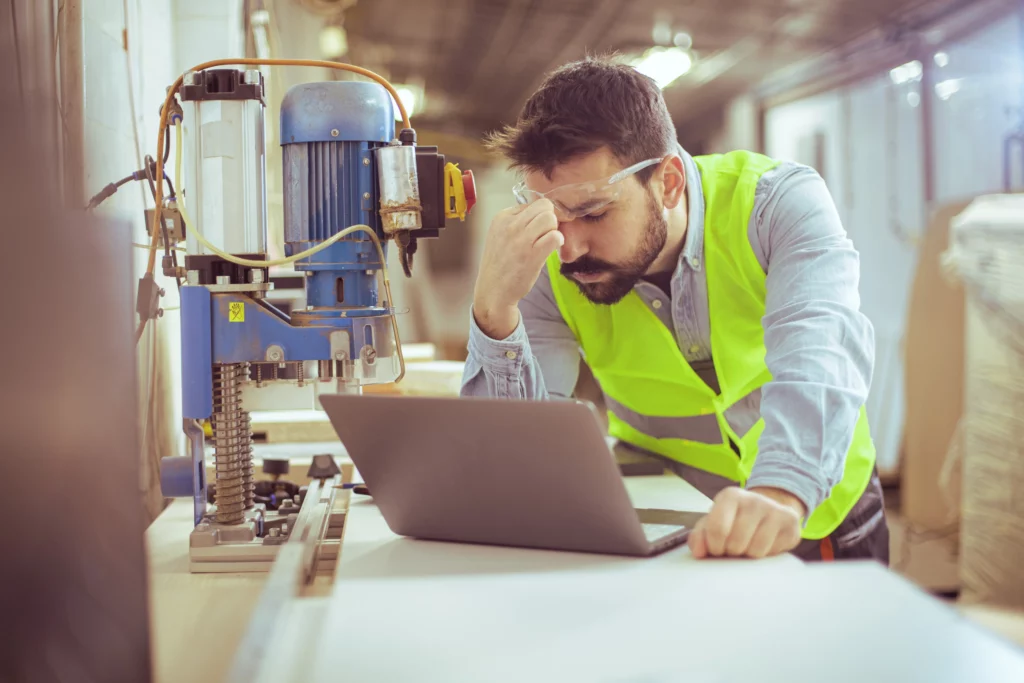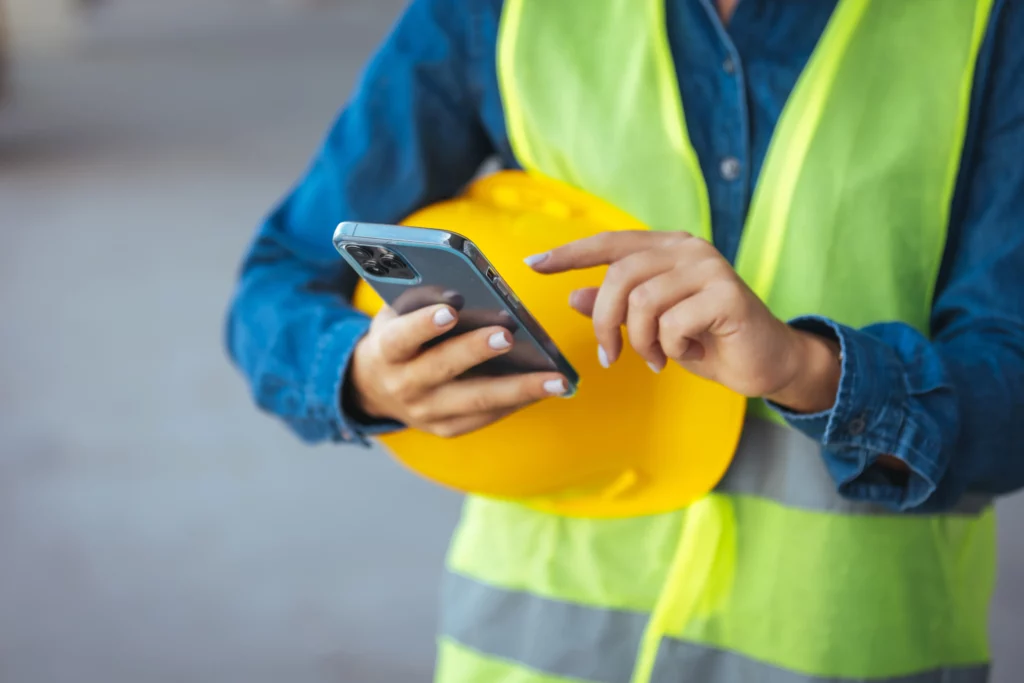Navigating the AI Landscape with Insights from a Chief Geek
Hello all! I’m Andy Dumbell, the CTO and co-founder of Notify Technology, often dubbed the ‘Chief Geek’ in our corridors. I recently had the pleasure of diving deep into the world of AI (Artificial Intelligence) and its impact on workplace safety as a webinar panellist. Here’s a digest of what we uncovered, sans the usual tech jargon and over-hyped AI fantasies.
Benefits of AI and the Implications for Health and Safety
At its core, the aspiration for AI is to be a supercharged digital brain, designed to tackle complex problems, provide insightful answers to a wide range of questions, make predictions, and streamline repetitive tasks, much like a human but faster. This broad potential of AI becomes more tangible and relatable when we see it in action in our daily lives.
Take ‘Be My AI‘, a clever app that taps into computer vision technology to interpret visual information (photos and video), providing blind and visually impaired people with a new level of independence in their interactions with the world around them. Snap a photo, and this app becomes your eyes, talking you through what it sees. Need to read a letter, check if your yoghourt has gone off, or get a thumbs up on your outfit choice? ‘Be My AI’ is your go-to digital pal.
This same transformative power has immense potential in health and safety. Imagine being able to snap pictures of hazardous products, and having technology instantly identify the products and their associated risks, for it to evaluate the corresponding risk assessment and recommend the right PPE for safe use, and so on. If we could pull this off and streamline your COSHH Risk Assessments, it would save you precious time, allowing you to redirect your efforts toward more valuable pursuits.
So, in a nutshell, AI is not just a smart piece of tech; it has the potential to be a game-changing ally. It’s about empowering us to be better, smarter, and safer, in our everyday lives, from assisting the visually impaired, to transforming workplace safety.
Improve Safety Perspectives with AI Applications

Understanding AI’s Role in Health and Safety
The landscape of AI in health and safety is evolving but let’s face it, amidst this current ChatGPT led resurgence, AI hasn’t yet fully convinced everyone of its potential. Our survey revealed that AI is at a crossroads in this sector; a significant 94% of our attendees were still navigating through the possibilities of AI as a tool for enhancing safety measures. It’s a bit like when online banking was first introduced; interesting and promising, but not everyone’s convinced… yet.
Embracing AI Adoption
When it comes to adopting AI, opinions are as divided as they come. Just over half of the participants indicated a readiness to embrace AI technologies within the next year. The others, however, either remain hesitant or are content with their existing technological solutions. This split decision paints a picture of a field at a pivotal moment of technological transition.
Overcoming Barriers and Navigating AI Adoption
Unsurprisingly, the most significant barrier to adopting AI in safety is financial constraints, which are tighter than finding a parking space in central London! Hot on its heels is a pervasive lack of detailed knowledge about AI. It’s a classic conundrum – the need for technology is clear, but the understanding and resources to implement it are lagging behind.
Additional obstacles include securing leadership commitment, navigating IT security landscapes, and overcoming reservations about the reliability of AI-generated data. Together, these factors create a complex web of challenges, slowing the adoption of AI in the realm of health and safety.
Addressing Health and Safety Challenges Head-On with AI Solutions
In my conversations with our customers, two key challenges frequently arise for health and safety professionals: coping with increasing demands amidst shrinking resources, and attracting a new generation into the field. AI technology offers compelling solutions to both.
Case Study: The MATE Solution by GE Renewables
A prime example of AI in action is the MATE solution by GE Renewables, showcasing how artificial intelligence can transform EHS management by swiftly analysing EHS data, freeing up time and often providing more accurate results than humans.
MATE is an Artificial Intelligence and Machine Learning tool for EHS. It was designed to help GE identify and validate risks, at an operational task level, in real time.
It can process 500,000 records in less than 3 minutes, with an accuracy of 92%. But more importantly, it has helped GE Renewables reduce severe injuries and fatalities by 90%, and reportable injuries by 40%.

As part of their R&D, they compared the performance of humans vs machines, with a sample of 2,000 data records. It took 2 people over 10 days to analyse and process this data. It took MATE less than 30 seconds. The human based analysis was 55% accurate, and MATE was 88% accurate.
While developing MATE wasn’t easy, with several initial setbacks, the perseverance and innovation behind this project have clearly paid off. So AI excels in processing and analysis, however it’s the human insight that drives the creation and effective application of tools like MATE, ensuring safer workplaces.
What is the Impact of AI on Safety Leader Talent Development?
Beyond operational efficiency, AI’s role in health and safety extends to revitalising the sector’s workforce. It’s not just a tool for current professionals, but a beacon attracting future talent that can help to redefine the sector’s appeal to the next generation of professionals. Today’s burgeoning workforce, tech-savvy and innovation-driven, is seeking careers that blend traditional expertise with cutting-edge technology. AI stands at the forefront of this intersection, offering a dynamic and engaging environment for new talent.
For those who have grown up in the digital age, the allure of AI in health and safety is multifaceted. It promises a workplace that is continually evolving, where technology is used not just for automation, but for innovation and problem-solving.
Furthermore, AI’s presence in health and safety will pave the way for continuous professional development. It offers learning opportunities. By integrating AI tools, professionals can stay ahead in their field, mastering new technologies that are reshaping the global workplace. This constant learning curve is not only professionally satisfying but also enhances the marketability and versatility of health and safety professionals.
Addressing Challenges and Finding Solutions Using AI

AI isn’t perfect and it’s not a silver bullet – there are some real concerns and limitations to be aware of…
Navigating Risks and Exploring Emerging Tech in Health and Safety
First up, there’s the fear of AI slipping up – it’s inevitable that AI systems will, at times, make mistakes or deliver incorrect results. Sometimes the consequences will be harmless, but mistakes in health and safety can be costly, so people are worried about handing the reins to a machine.
There have been cases of wrongful arrests on the back of facial recognition technology getting it wrong, and there have been fatalities linked to the limitations in autonomous vehicle technology.
So it’s important to evaluate the risks associated with AI tools, and also to recognise that innovation is moving at pace, and some tools may not be quite ready for prime time, just yet. Quality assurance is key here. You need to continuously monitor and validate the tech and build trust over time.
Using AI in the Workplace to Balance Opportunities and Anxieties
Next, there’s the job anxiety. People worry about AI taking their jobs, and whilst tech disruption always creates job displacement, the bigger threat might actually be your colleague who embraces AI. Those who morph into AI-powered professionals, are likely to stand out and snag the best opportunities.
Navigating AI Security and Data Privacy Risks
Let’s talk about security risks – for example the inadvertent exposure of sensitive company information. It’s akin to having a conversation in a crowded cafe, unaware that the person at the next table is eavesdropping. With tools like ChatGPT, the risk lies in users, often unknowingly, feeding it confidential data.
Data privacy, in this context, becomes a high-stakes game. We’re not just guarding against external breaches; we’re also navigating the pitfalls of our own interactions with AI. In an era where data is king, keeping it secure is more complex than just turning a key. It’s about being vigilant every time we interact with these intelligent systems, ensuring that what’s private doesn’t slip out in a casual digital conversation.
Understanding the Implications of AI in Health and Safety
A significant hurdle in embracing AI lies in its ‘black box’ nature. Many AI algorithms operate in a way that’s as clear as mud, cloaked in layers of complexity that even the savviest tech minds find challenging to decipher. This opacity creates a trust barrier. When we can’t untangle the ‘why’ behind an AI’s decision or prediction, scepticism naturally rises. It’s like following a navigator without understanding its sense of direction – you might reach your destination, but the journey’s uncertainty can be unsettling. For AI to be fully integrated and trusted, especially in critical sectors, it’s imperative that we develop ways to shed light on the inner workings of these complex algorithms.
Training Challenges in AI Adoption
The AI landscape is rapidly expanding, presenting an overwhelming array of tools and technologies. Navigating this burgeoning field is like being a kid in a candy store with endless choices – exciting yet daunting.
Each new AI-powered solution brings its own set of features and complexities, turning the selection process into a formidable task. The challenge doesn’t end with choosing the right tool; the real test begins with mastering these systems. As the list of available AI solutions grows, so does the need for specialised training, making the adoption of these technologies a continuous journey of education and adaptation.
Navigating Perception vs. Reality with AI
That said, one of the major hurdles, I see, is actually public perception of AI.
Slap the “AI” label on a tool, and you’re likely to polarise your audience. In my world, for example, the software development space, there’s been hesitation to embrace AI-based productivity tools, even though we’ve readily adopted non-AI solutions in the past. Perception can really make or break the game.
Embrace Education to Understand AI Capabilities
So, how do we overcome these challenges? For one, continuous education. The more we understand AI’s capabilities and limitations, the better we can integrate it. Second, view AI as a tool that augments your human expertise and knowledge, not one that replaces it. Finally, organisations need to foster a culture of ‘co-working’ with AI, rather than a ‘man vs. machine’ mentality.
To put it simply: don’t fear AI, collaborate, and innovate with it. That way, you’re not just surviving the future of work, you’re thriving in it.
Taking the First Steps with AI in Health and Safety
ChatGPT and similar next-generation chatbots are excellent examples of AI’s pervasive presence. The real challenge for health and safety professionals lies in navigating the plethora of AI tools available.
How Health and Safety Professionals Can Practically Apply AI
My suggestion is to start with small, manageable applications. Look for tasks that consume significant amounts of your time – tasks where AI, acting as a virtual assistant or advisor, can bring tangible improvements. This could range from pinpointing the root cause of workplace incidents to staying up-to-date with safety regulations or creating interactive training modules for staff.

Tools like ChatGPT can be a real efficiency booster.I use tools like this routinely, for everything from, refining my communications – this is especially useful, for a dyslexic brain like mine – to research, brainstorming, rehearsing presentations, debugging software code and so on.
Don’t forget to do your homework, speak with your IT team for guidance, and then start exploring what’s possible. And like any new tool, invest time, to get a handle on how to use it, to get the best out of it, and understand its limitations. And remember, you’re still the captain of your ship – fully in control and accountable.
AI Implementation for Complex Health and Safety Challenges
When it comes to tackling more complex problems with AI, the approach should be methodical and strategic:
- Identify the Problem: Start by clearly defining the complex problem you’re facing. Is it predicting potential safety hazards? Improving response times to incidents? Streamlining safety compliance processes?
- Research AI Solutions: Look for AI tools that are specifically designed to address these challenges. This might involve predictive analytics for hazard identification, AI-driven monitoring systems, or compliance management software.
- Pilot Small-Scale Projects: Before a full-scale implementation, pilot the AI tool on a smaller scale. This allows you to assess its effectiveness and make necessary adjustments.
- Integrate and Scale Up: Once the pilot project proves successful, gradually integrate the AI solution into broader operations. Ensure that it aligns with other systems and processes in place.
- Continuous Learning and Adaptation: AI in the field of health and safety is not a set-and-forget solution. It requires ongoing learning, both for the AI system and the human professionals working with it. Stay updated with the latest developments and train your team to leverage AI tools effectively.
- Collaborate with AI Experts: For more complex implementations, consider partnering with AI specialists who can provide deeper insights and guidance.
AI’s Impact on Health and Safety Leadership
By approaching AI with a blend of curiosity, caution, and a willingness to learn, health and safety professionals can harness its power to not only solve complex problems but also revolutionise the field of health and safety.
